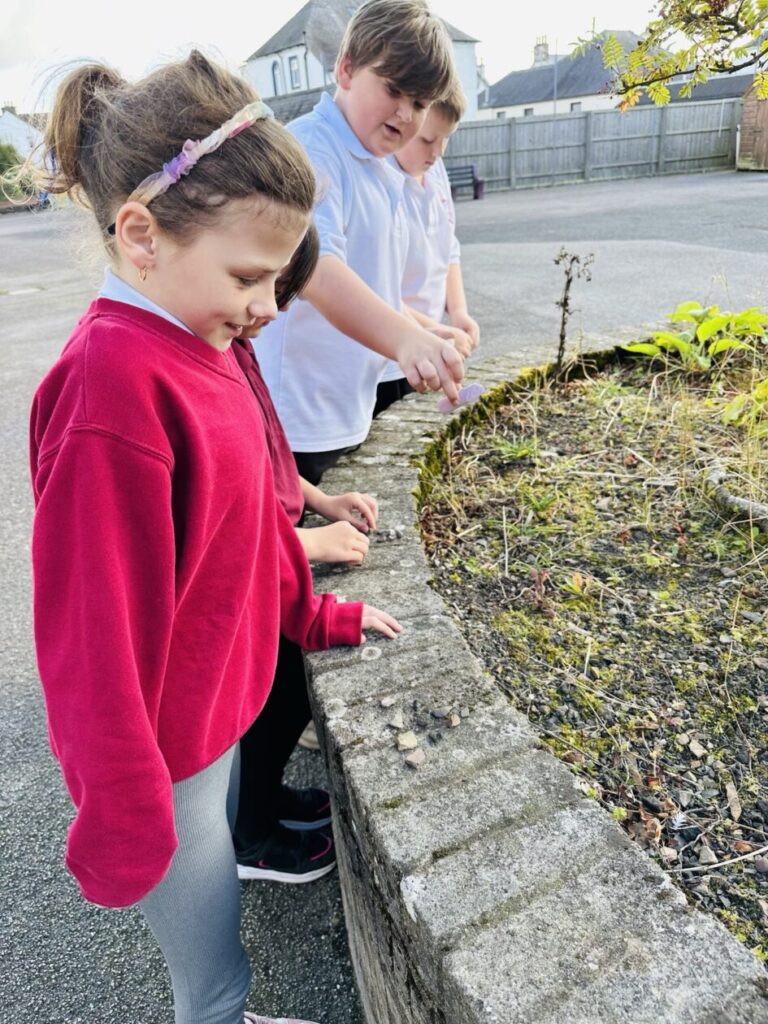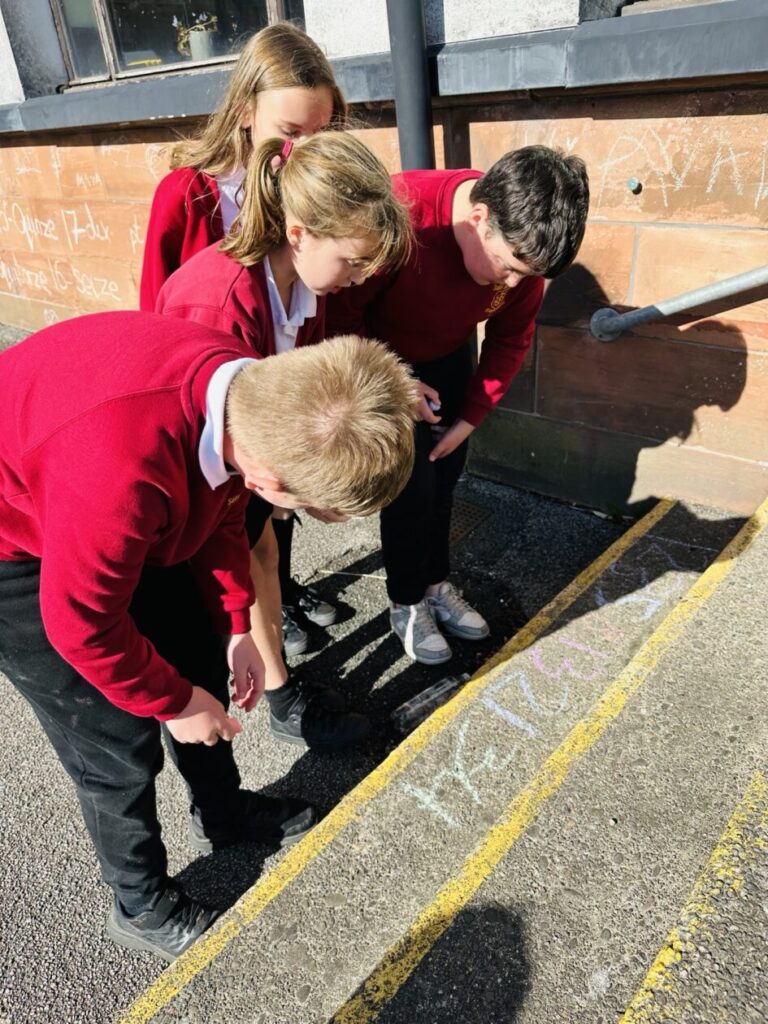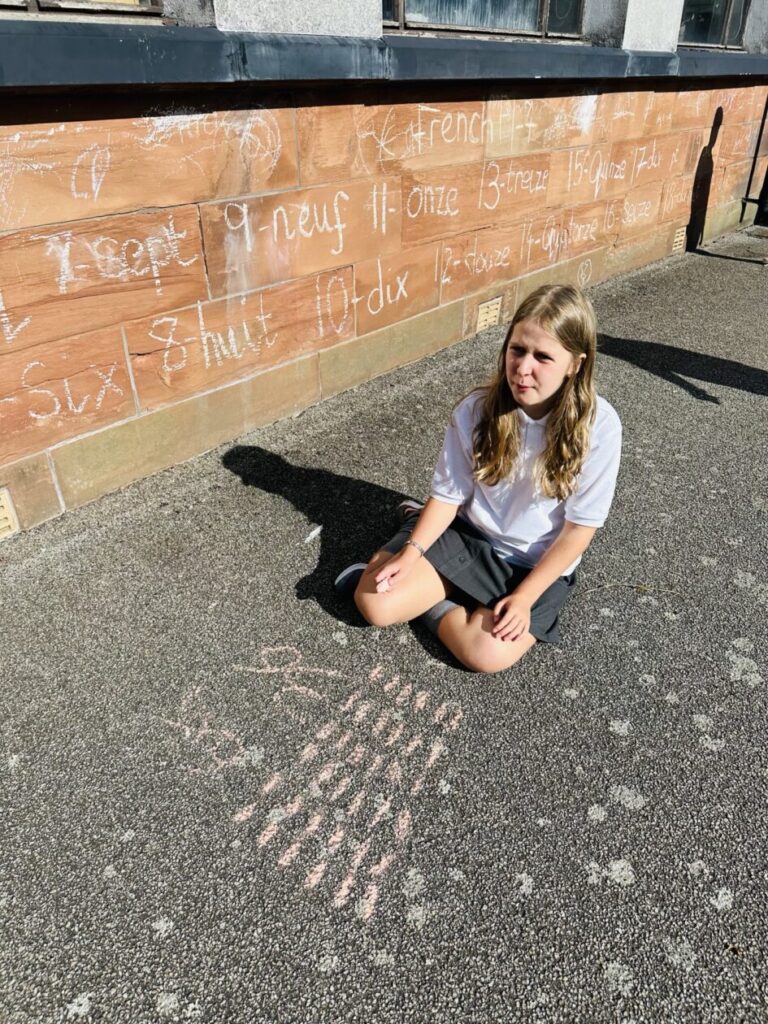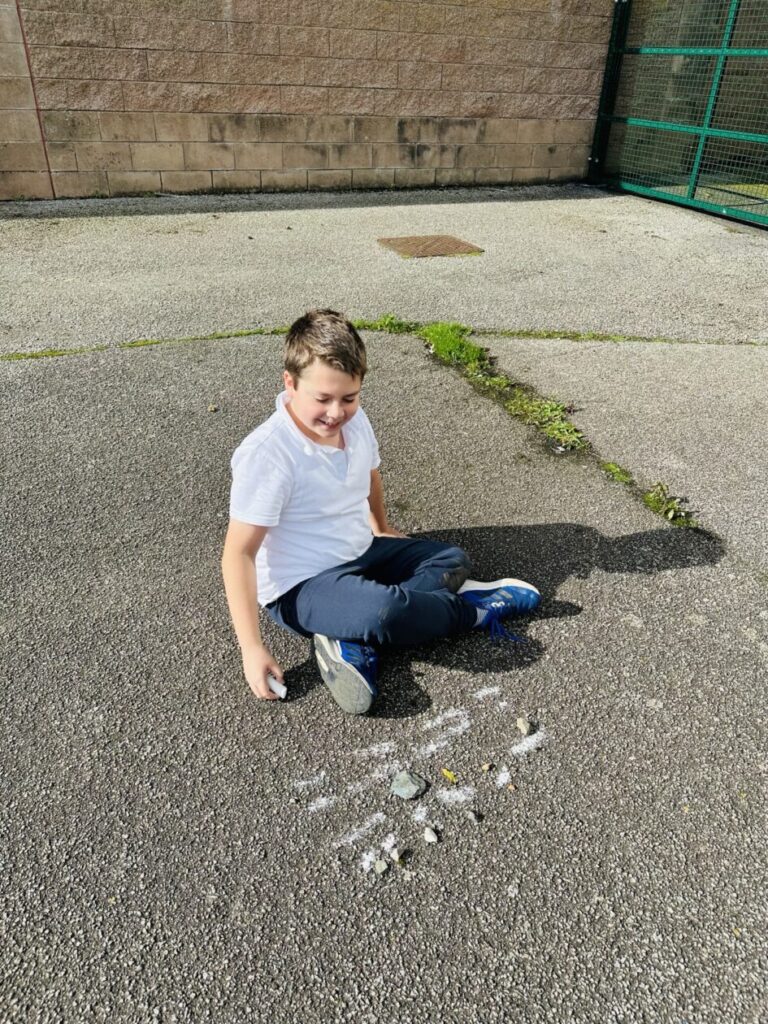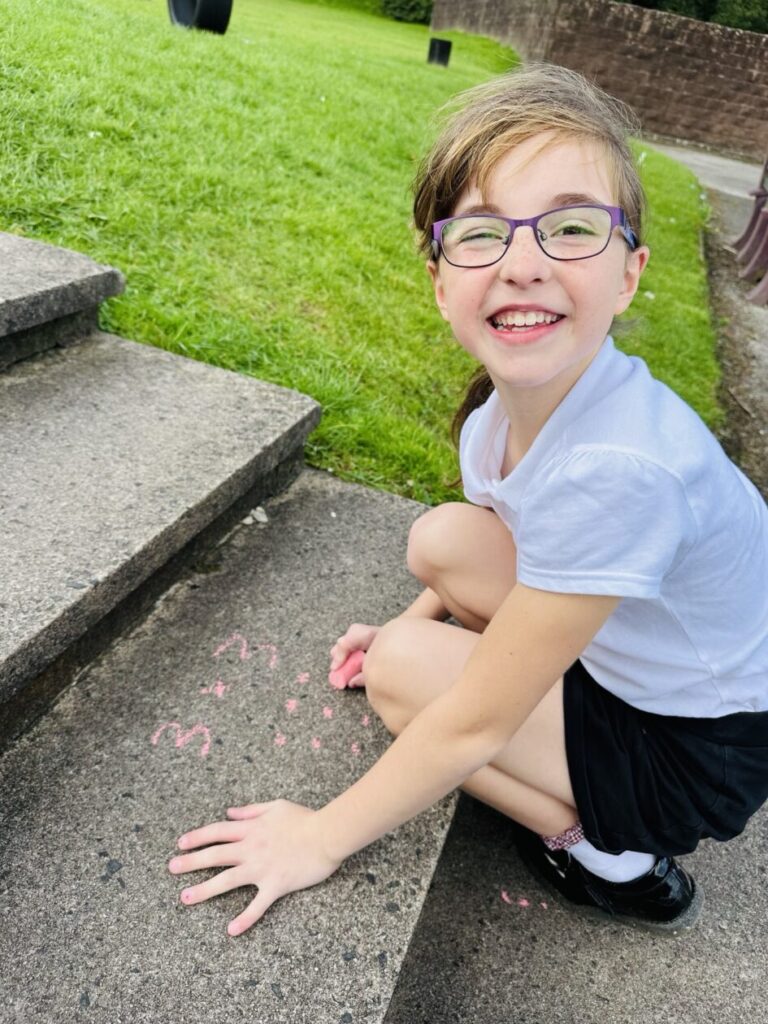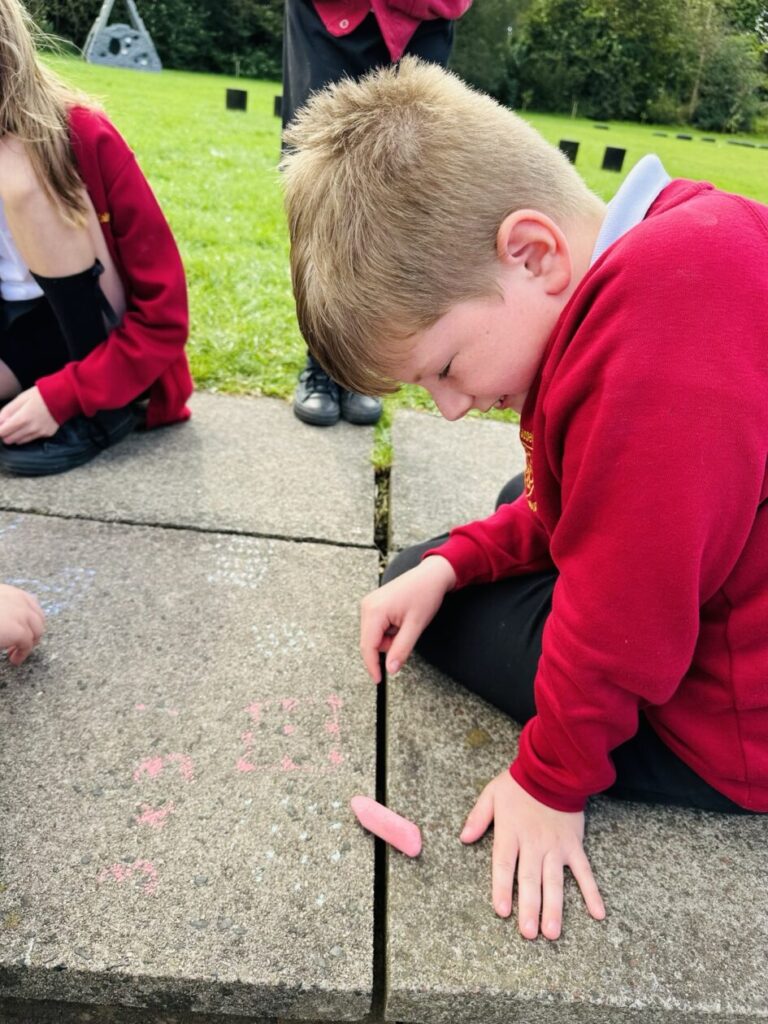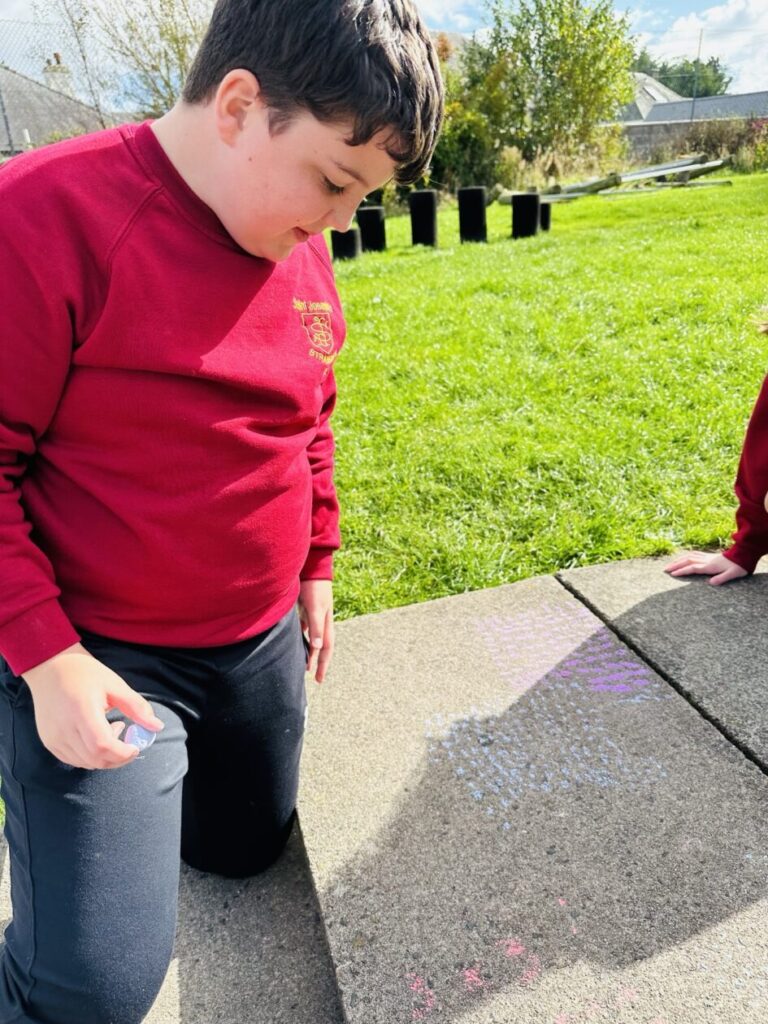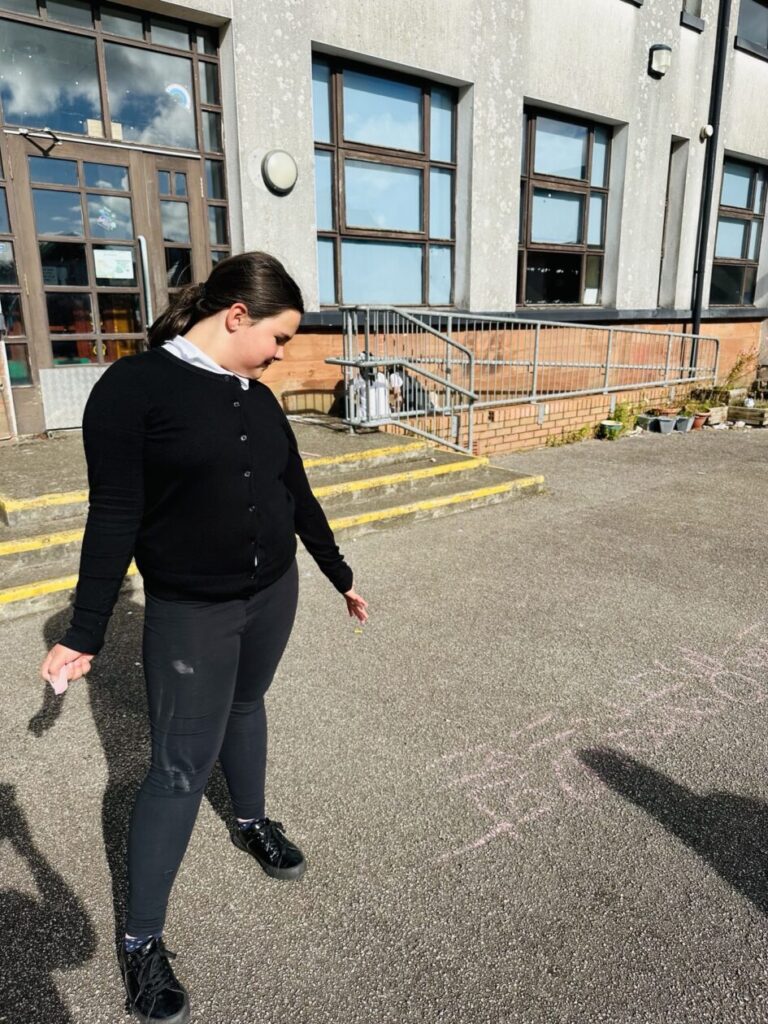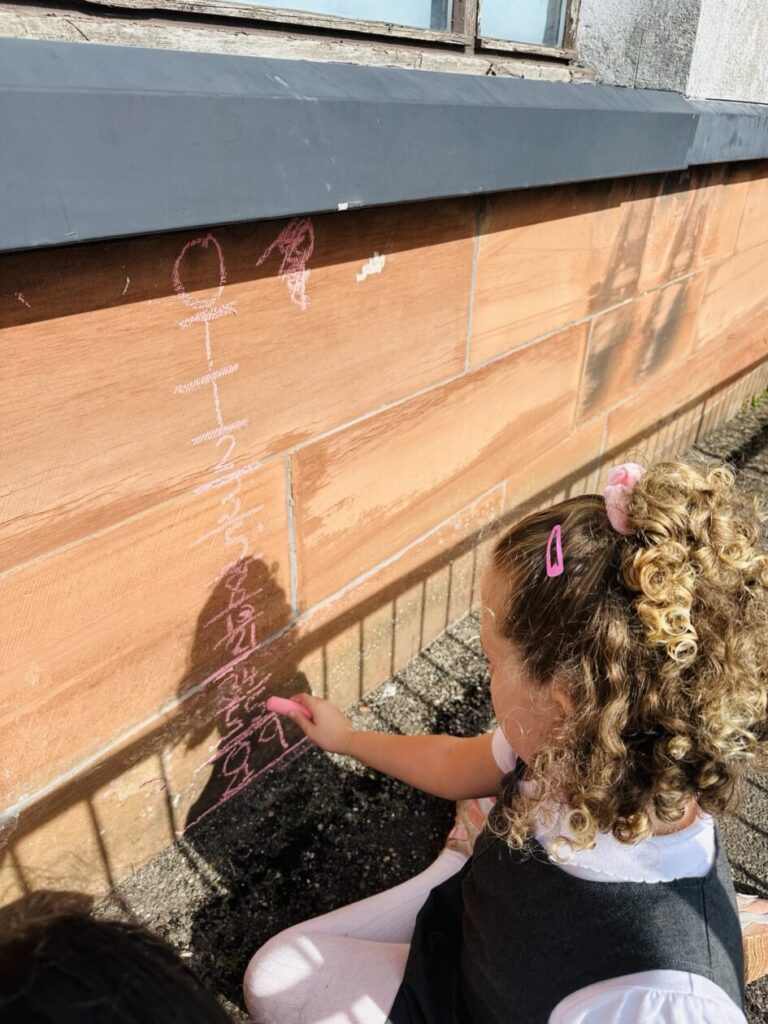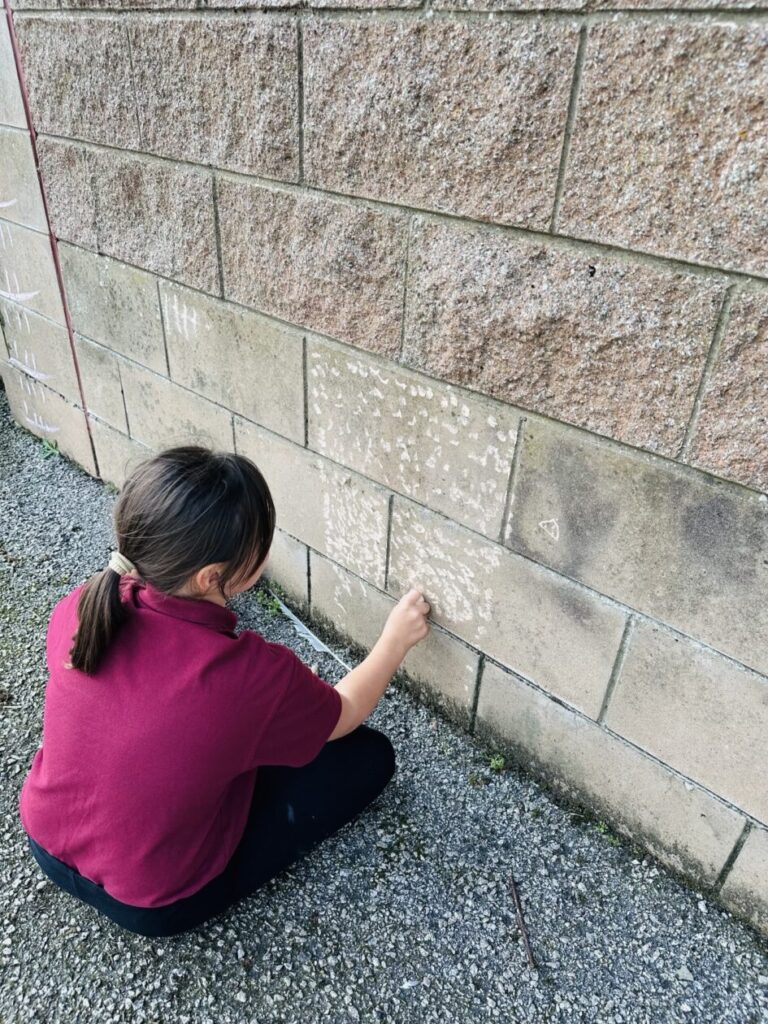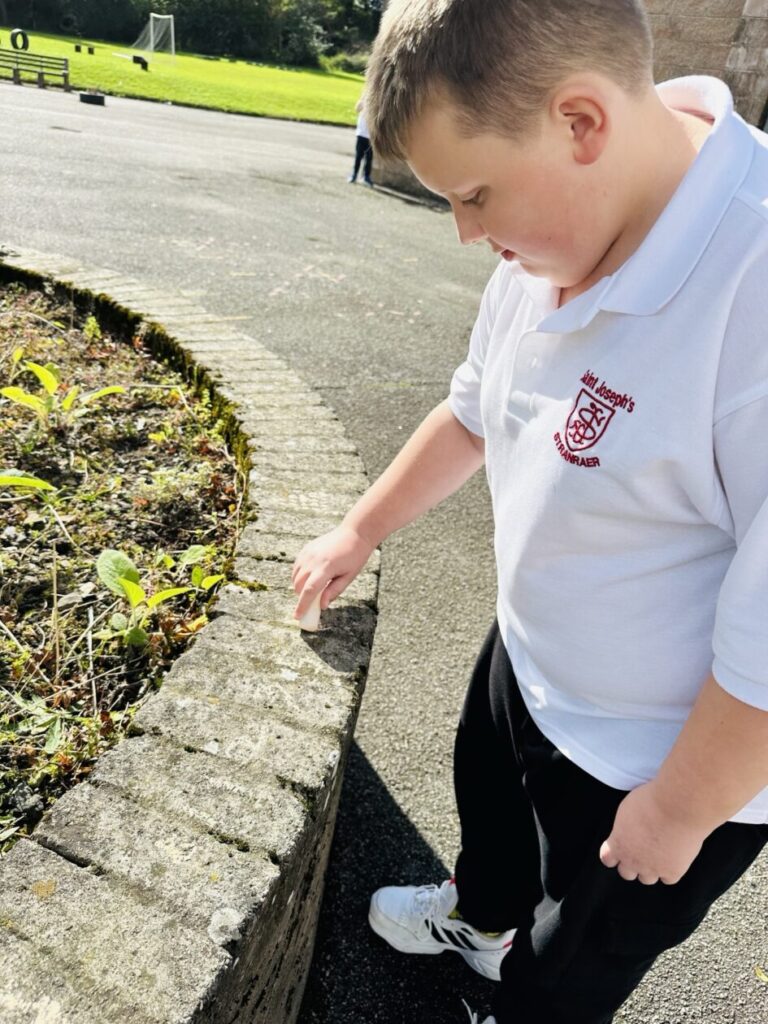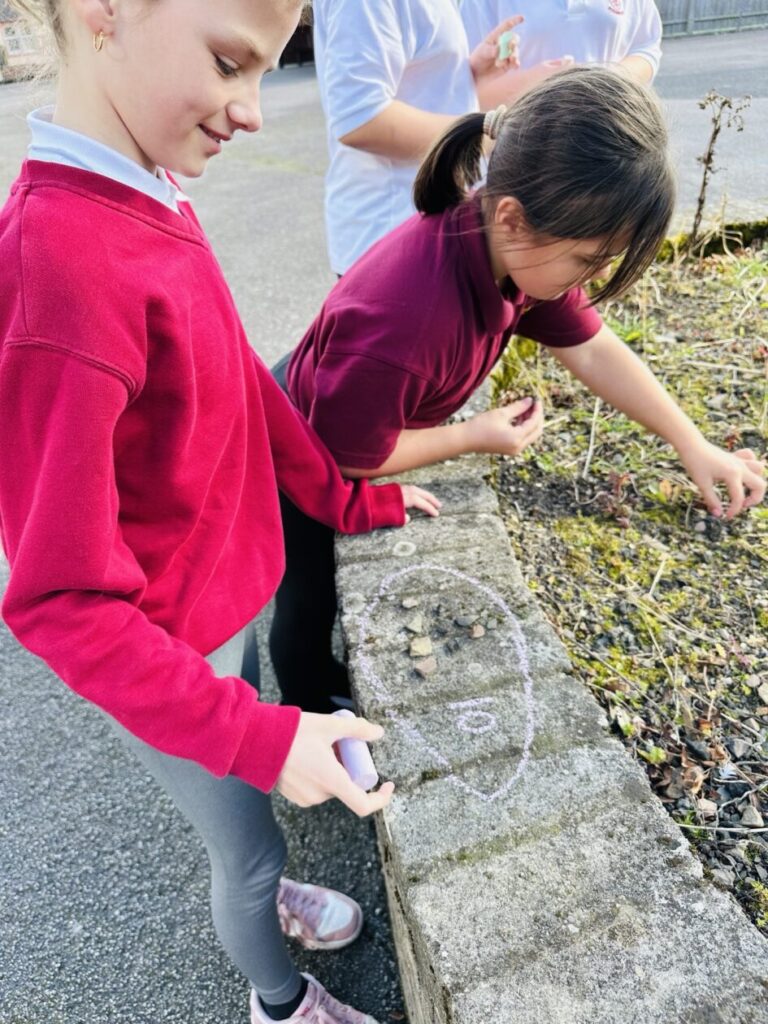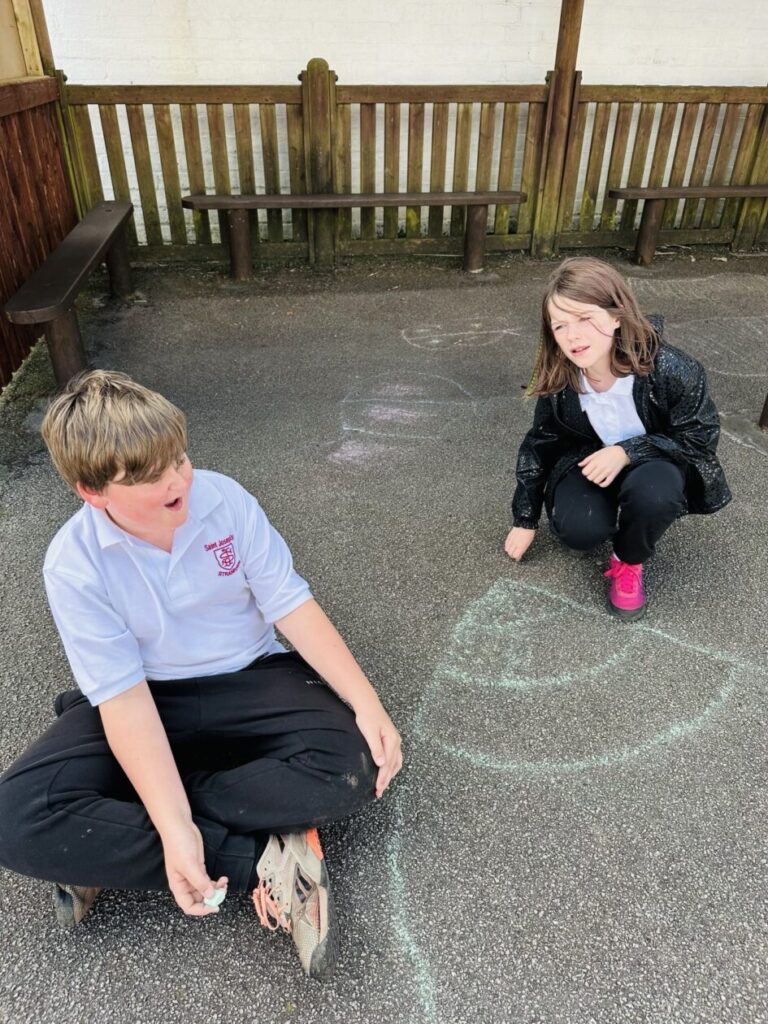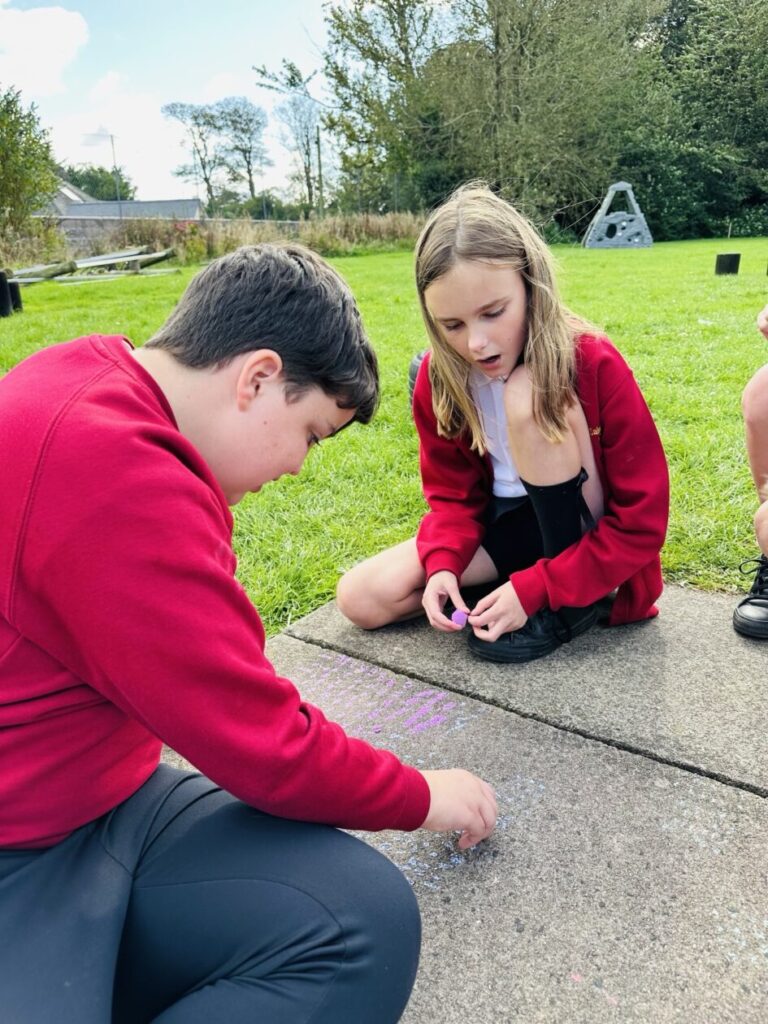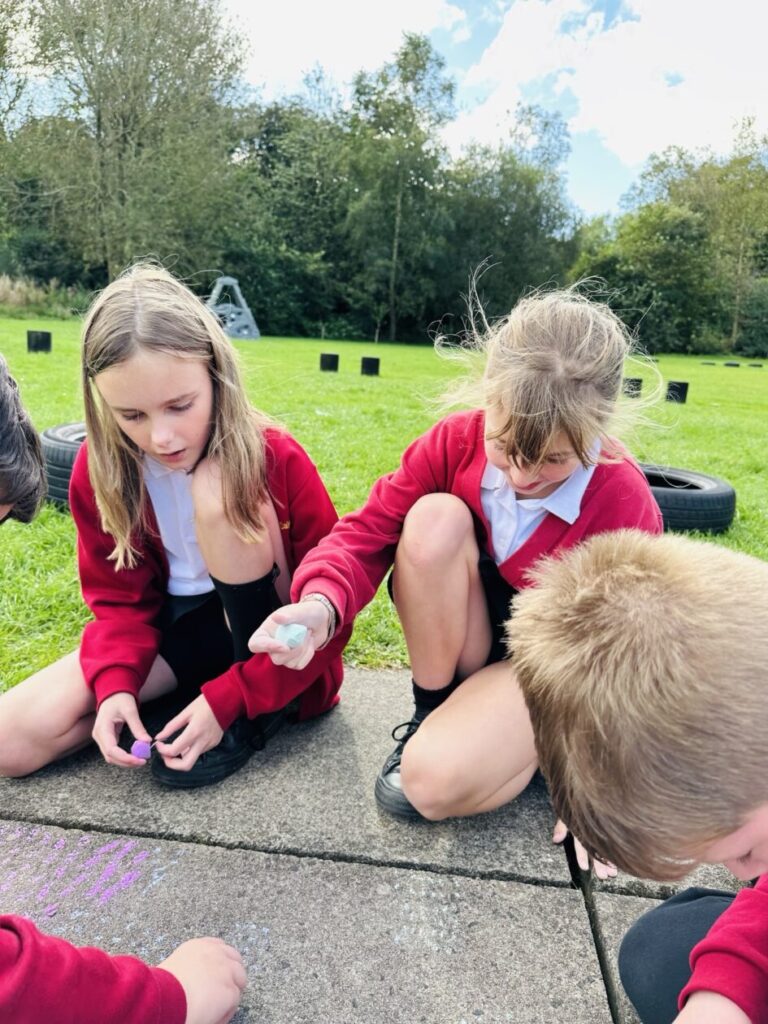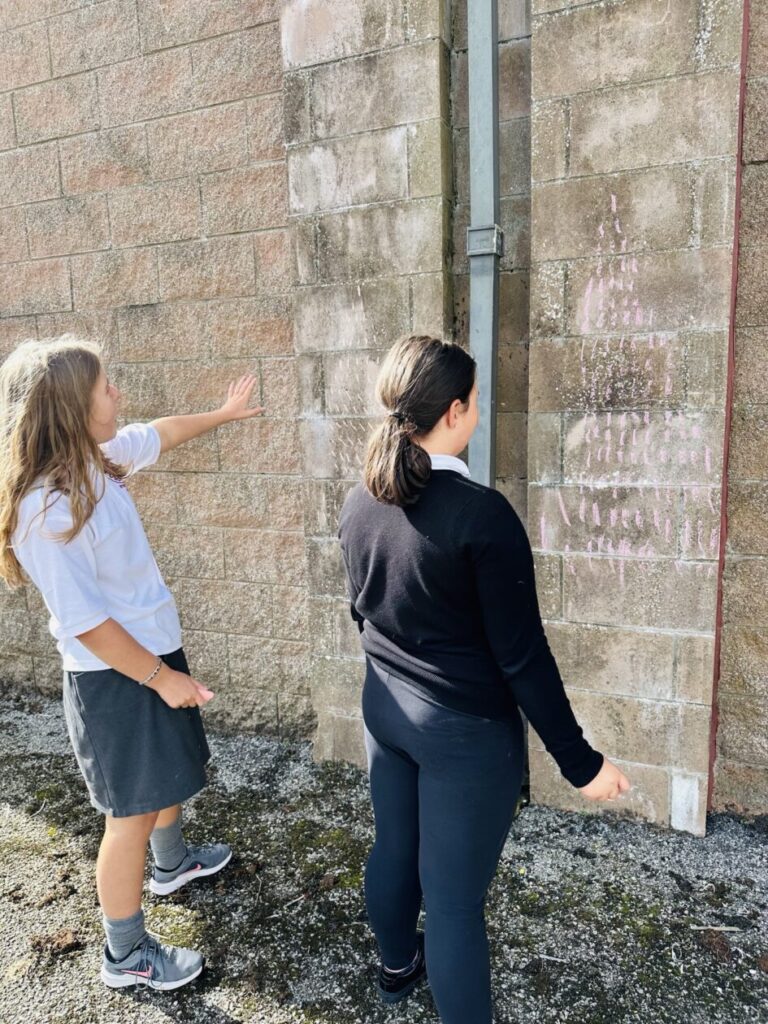Maths Week Scotland: Exploring Patterns Outdoors!
To celebrate Maths Week Scotland, our pupils took their mathematical curiosity outside! Today, the focus was on exploring square numbers, triangular numbers, and the fascinating Fibonacci Sequence. The children were excited to step away from their desks and discover how these mathematical concepts are linked to patterns in nature.
Armed with chalk and a variety of natural materials they collected—such as leaves, pebbles, and sticks—the pupils got creative in representing each concept. They began by forming square numbers with chalk grids and arranging stones into triangular formations. Then, they worked collaboratively to model the Fibonacci Sequence, using spirals and patterns inspired by nature’s own designs, like pinecones and flowers.
This hands-on approach encouraged everyone to think deeply about how numbers and patterns are present all around us, connecting maths to the natural world. The pupils particularly enjoyed the challenge of using their creativity and problem-solving skills to illustrate their understanding in unique ways.
The outdoor learning experience was a fantastic way to celebrate Maths Week Scotland, making maths not only accessible and engaging but also a whole lot of fun! We are proud of the effort and enthusiasm shown by all our young mathematicians. Well done, everyone! 🌿✨
- UNCRC Children’s Rights Covered:
- Right to Education (Article 28): Engaged in hands-on learning to deepen mathematical understanding.
- Right to be Heard and Express Opinions (Article 12): Shared ideas and approaches during group work.
- Right to Leisure, Play, and Culture (Article 31): Enjoyed creative outdoor activities that integrated play and learning.
- SDG Goals Covered:
- Goal 4: Quality Education: Provided quality, inclusive learning experiences.
- Goal 15: Life on Land: Linked learning to nature and sustainable practices.
- SHANARRI Indicators Covered:
- Healthy: Physical activity outdoors while learning.
- Achieving: Showcased knowledge through practical activities.
- Nurtured: Positive and supportive learning environment.
- Included: All pupils participated equally in the activities.
- Meta-Skills Used:
- Focusing: Concentrated on creating accurate patterns.
- Curiosity: Investigated how numbers relate to nature.
- Creativity: Represented mathematical ideas in unique ways.
- Collaborating: Worked together to achieve a common goal.
- Critical Thinking: Connected abstract concepts to real-world examples.
- Communicating: Explained and discussed their understanding.
- Sense-Making: Interpreted and connected mathematical patterns to real-world contexts using natural materials.
